| 1 | A peaceful riverside guardian |
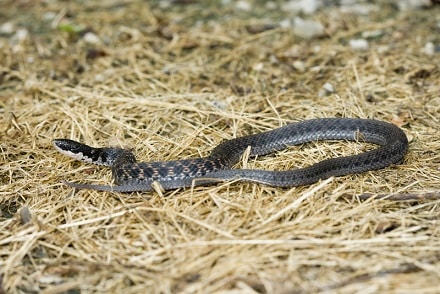
There are some snakes people normally encounter while lost in the desert, and others which hiss at you in humid rainforests. However, there’s also one you’re most likely to encounter while taking a shortcut between two damp fields in your waterproof boots, possibly an illegal shortcut which a farmer would frown on. This species is the Kirtland’s snake, a 40-60cm species of northern US states such as Ohio and Illinois.
Kirtland’s snakes are non-venomous, and can turn up in open fields and spacious woodlands alike, as long as there’s at least one shallow source of water nearby. Their favourite habitats of all are moist fields, reservoirs, or an overgrown grassy ditch at the edge of a crop field. Kirtland’s snakes are found in the kind of shallow streams where insects are constantly buzzing around and frogs are hopping everywhere.
This species also strays into urban zones, where they again stick to water. Within towns, Kirtland’s snakes are commonly found near drainage ditches. They’ve also been sighted in parks, cemeteries, by railways crossings, and even in trash dumps. Their absolute favourite urban habitats are vacant lots with knee high grass and scattered rubbish.
| 2 | Found mainly in 3 states |
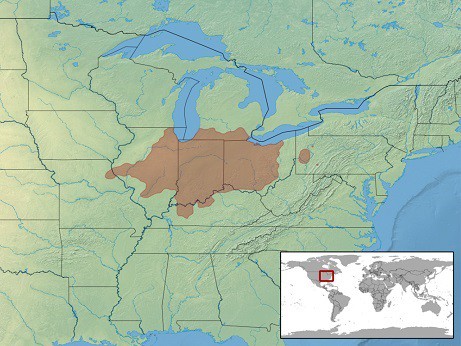
The Kirtland’s snake isn’t a widespread species like the garter snake. As far as we know, it existed in 9 states in the early 20th century, but the Kirtland’s snake hasn’t been seen in Wisconsin since 1929, and since 1965 in Pennsylvania, where they’re categorised as endangered. In Tennessee, a tiny isolated population was discovered in Henry county in 2012, while in Kentucky, a tiny thumb pokes southward and crosses the border of Indiana.
The main, unbroken heartlands lie in Ohio, Illinois, Indiana, north central Kentucky, and southern Michigan, particularly the first two, where they occupy almost the entire states. You won’t find the Kirtland’s snake anywhere near the east or west coast.
Despite their gravitational pull towards water, and despite having strong swimming skills, the Kirtland’s snake is only rarely seen swimming. This species lacks any kind of venom, and isn’t thick and crushing like a python. Its neck tends to blend in with its head, unlike the sharply triangular head of a viper.
| 3 | Intricate, complex patterns |
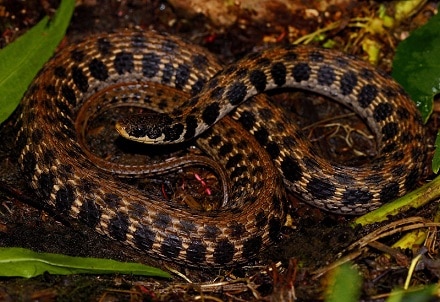
The Kirtland’s snake is notable for being highly deceptive. Not deceptive in that it bats its eyelids and lures you in close, before killing you with a heart stopping bite, but deceptive in that its dull colours are far more fantastical when you get up close. From a distance, the Kirtland’s snake merely looks brown and black, but it’s actually covered in black, hexagon-shaped patterns. Up close, the dull scales seem to glow like a lamp, and glisten with the colour of honey. The flanks of its body are white, contrasting like a set of dominoes.
Then there’s the belly, the signature feature of this species. Instead of a typical cream colour, this belly is vivid red, or sometimes dark orange, bordered by two parallel rows of black spots which eventually blend into the white stripes.
There are no big unshapen blotches like a boa constrictor here. Instead, the Kirtland’s snake is an ordered and focussed looking snake, with the various dots and patterns all intricately arranged.
| 4 | Lives in empty crayfish burrows |
The Kirtland’s snake is a difficult snake to research, mostly because it’s so hard to find. In their moist habitats, the Kirtland’s snake is “fossorial”; it dwells underground for a large proportion of the time.
Unlike the corn snake, which prefers rodent burrows or even the passages of dead tree roots, the Kirtland’s snake is attracted to vacant crayfish burrows. Most individual snakes have their own personal burrow, making each moist field like its own community of snakes. The correlation is strong enough that scientists searching for Kirtland’s snakes always look for heavy crayfish habitats first. They’re specifically correlated with two species: the Prairie crayfish (Procambarus gracilis) and devil crayfish (Cambarus diogenes).
As a notoriously sedentary snake, the Kirtland’s snake will rarely stray far from the entrance to these burrows. Crayfish burrows are the ultimate because they lie close to the water bodies they rely on. Kirtland’s snakes incapable of digging their own burrows, lacking the special pointed snout.
| 5 | Fears open spaces |
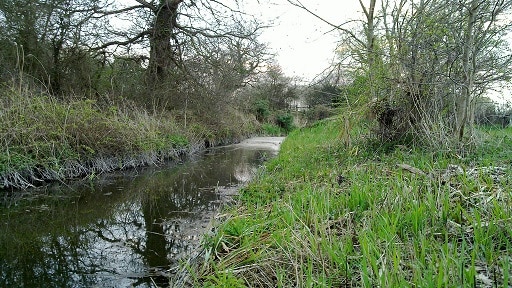
Being underground has advantages, as the Kirtland’s snake is somehow completely immune to wildfires, no matter how ferocious and scorching. They do have one fear though – open spaces. When they leave their burrows, Kirtland’s snakes are always found under some form of shelter, whether it’s leaf litter, knee high grass, or loose rock piles.
In towns, vacant lots are favourites because of all the rubbish casually dumped in them. Cardboard boxes, trash bags, and sheet metal are particular favourites for the Kirtland’s snake. They’re also a rare snake species to make discarded tyres their home. They’re particularly attracted to recently felled forests, because of all the loose logs lying around (as long as there’s water nearby).
Scientist hoping to trap the Kirtland’s snake exploit this shyness to maximum. Their trusted strategy is to visit moist, grassy spots, and leave a sheet of alumium metal directly on top of a crayfish burrow. This doesn’t always lure the snake out, but works quite consistently.
| 6 | Threat 1: vanishing habitats |
Many biologists fear that the Kirtland’s snake is dwindling fast. On a state level, it’s listed as endangered in Indiana and Pennsylvania, and as threatened in Ohio, Kentucky and Illinois. The Kirtland’s snake once existed in 100 counties across 8 states, but since 1980, it has only been observed in a quarter of those counties. In the surviving countries, it may have declined by 90%.
The main problem is that its wetland, prairie heartlands are becoming a thing of the past. Even the urban populations are said to be remnant pockets, which are on their last legs as tall, looming buildings slowly close in.
The good news is that in the areas where it survives, the Kirtland’s snake is very abundant. There’s also a chance that its numbers have been underestimated. As of 2017, 47% of the old populations were classified as extant (surviving), and only 4% were officially extinct. That left 49% languishing in the “unknown” category, but if that 49% split along the same lines, then the species would suddenly look a lot healthier.
| 7 | Can’t cope with herbicides |
Road traffic is a big problem for the Kirtland’s snake, despite its shyness. It’s particularly vulnerable in urban areas, as shown in 1972 when an S. Minton found 18 roadkill Kirtland’s snakes on one 0.4 mile stretch of road. In one Indiana hotspot, 186 Kirtland’s snakes were reported as roadkill from 1989 to 2004.
Another threat is agricultural chemicals, given their common hideouts in moist ditches adjacent to fields. A 1988 study found that Kirtland’s snakes completely disappear from spots where herbicides are applied. The chemicals most likely damage the earthworms and slugs they feed on, throwing a wrecking ball into the delicate food chain. It’s a similar scenario with crayfish, which are threatened by water pollution. Less crayfish equals less cosy burrows to hide in.
The biggest, most fundamental danger is that the remaining territory is extremely fragmented. Rattlesnakes or coachwhips are more adventurous and can travel long distances, but the Kirtland’s snake is naturally lazy, with a home range measured in metres. It’s too glued to its sheltered, watery abodes to strike out and colonise new horizons.
| 8 | Diet: slugs and earthworms |
The Kirtland’s snake is a specialist in small, slimy creatures, eating slugs and earthworms all its life and never once getting bored. Unlike the corn snake, mice and rats are off the menu for the simple reason that its 50cm body is too small. In 1936, reptile expert Raymond Ditmars concluded that “it feeds upon small frogs and toads”, but this is now confirmed as false, as no captive Kirtland’s snakes have ever eaten amphibians.
Their sluggish tastes are probably why they survive so well in grubby locations like vacant lots, while barely moving under their cardboard boxes. When an earthworm slimes past, the Kirtland’s snake will poke its head from its burrow inquisitively and begin flecking its tongue. The Kirtland’s snake isn’t venomous, and instead pursues its prey to its last breath. It’s believed to chase earthworms directly into their own burrows.
Kirtland’s snakes have extremely refined taste buds. Scientists have noticed how they gobble up American slugs (in the Deroceras family) with a passion, but reject European slugs like Limax Maximus, probably because its body isn’t adapted to them.
| 9 | Flattens itself deceptively |
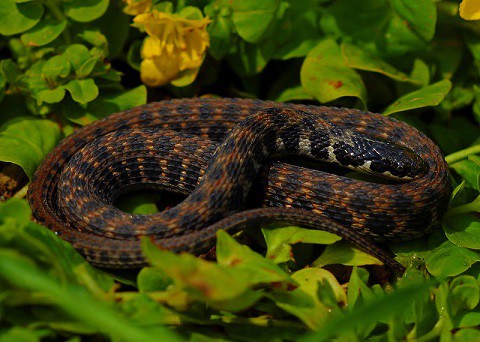
The grass snake of the UK is well known for its play dead tricks, where it goes limp in the hands of inquisitive dog walkers. The Kirtland’s snake has its own deception method: flattening its entire body. When spooked, it elongates its flanks and lies on the ground, thin as a ribbon. It becomes completely rigid, with the goal of looking far larger than it really is.
Another party trick is curling itself into an incredibly dense space, only the size of a quarter. Being a small snake, Kirtland’s snakes are potential prey for owls, racoons and foxes. They’re confirmed prey for the black king snake, in a brutal event once witnessed in Indiana.
If these spy tactics fail, then the Kirtland’s snake falls back on basics and flees into the moist undergrowth. As for humans, arguably the number one predator of all, the Kirtland’s snake hasn’t delivered a single confirmed bite.
| 10 | Who exactly was Kirtland? |

You might assume that Kirtland was the guy who discovered this species. Close but no cigar – it was actually discovered by his student Robert Kennicott, who named the snake in honour of his mentor Jared Kirtland, born in 1793. This esteemed naturalist also discovered the Kirtland’s warbler bird, and his student spotted the first Kirtland’s snakes in northern Illinois in 1856.
They were originally believed to be extremely rare, and until the mid-20th century, they were falsely lumped into the natrix family of watersnakes. The species was colloquially called Kirtland’s watersnake. But it was eventually resorted into its own family of Clonophis, derived from the Greek word Klon meaning twig.
The forest vine snake is another species named after Kirtland, but only in its Latin name of Thelotornis kirtlandii. This is an African resident spread over a dozen countries. Thelotornis kirtlandii is extremely vicious when cornered, and lives in trees rather than in tyres or under piles of cardboard.
